The only way to know for sure if your seeds are good or bad is to perform a viability test to see if they will germinate. It sounds complicated, but it’s actually very easy to do.
Seeds don’t last forever, and some will go bad much faster than others. There’s no way to know if old ones are still good just by looking at them, unfortunately.
I don’t want you to waste time and money planting the ones that will never grow. So in this post, I will show you step by step exactly how to perform a quick germination test for seed viability.
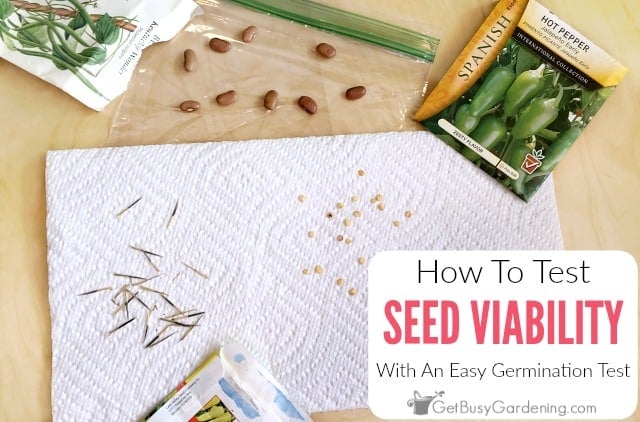
What Does Seed Viability Mean?
Seed viability means that a seed is alive and able to germinate to grow into a plant. A seed that is not viable is basically dead, and it will never grow.
Here are a few reasons why your seeds might not be viable:
- They’re too old
- They were harvested too early, and aren’t mature enough
- The mother plant was sterile
- The flowers weren’t properly pollinated
How Long Do Seeds Last?
Unfortunately, there’s not a set length of time that they will last. It depends on the specific type, and also whether you store your seeds properly or not.
Some can last for several years, even decades, while others will start to lose their viability after only one or two years.
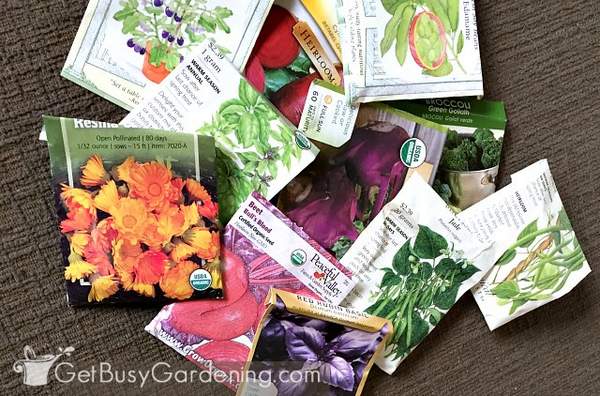
How To Test If Your Seeds Are Good Or Bad
The easiest way to check if your seeds are viable and good for planting is to use the paper towel and baggie method.
You can test as many seeds as you want, but I recommend using 10. This will give you a good sample size, and also makes for easy math.
If you don’t have that many to spare, then you can use fewer. But I wouldn’t test less than 5 seeds, otherwise your results won’t be very accurate.
Don’t worry, the ones that end up germinating won’t go to waste, because you can still plant them afterward.
Supplies Needed
- 5-10 sample seeds
- Zipper baggie (I like to use the smaller snack ones, but the sandwich size also works)
- 1-2 paper towels
- Sharpie marker or paint pen
- Water
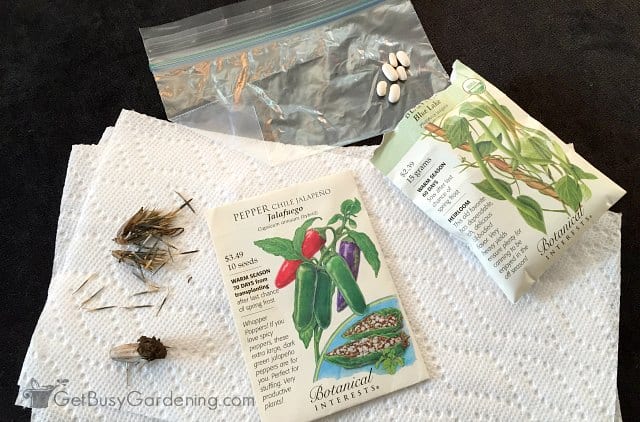
Steps By Step Instructions
Step 1: Prepare the seeds (optional) – If you’re testing any large seeds, or ones that have a thick outer layer, you can soak them overnight to soften them up. This is an optional step, but will help them germinate faster.
Step 2: Fold them into the paper towels – Moisten 1-2 paper towels, and squeeze them out so they aren’t dripping wet. Then straighten them out and lay them down on a flat surface.
Place 5-10 seeds on top, and space them so they aren’t touching each other. Then carefully fold the seeds into the paper towel.
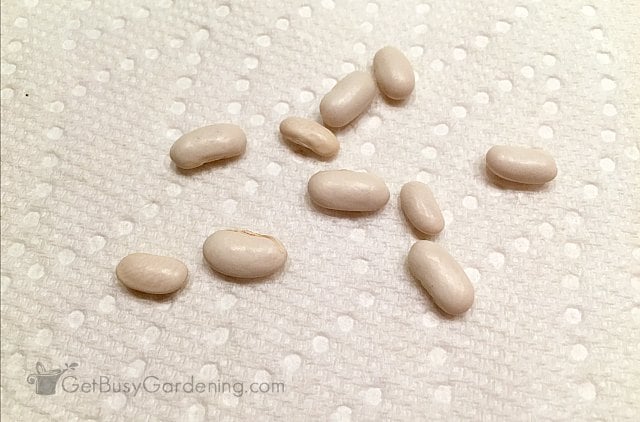
Step 3: Label the plastic bag – Use a paint pen or permanent marker to write the name of the seed on the baggie, and the date you started your viability test.
Slide the folded paper towel into the plastic baggie so it lays flat. Then gently press it down to release all of the extra air, and zip it shut.
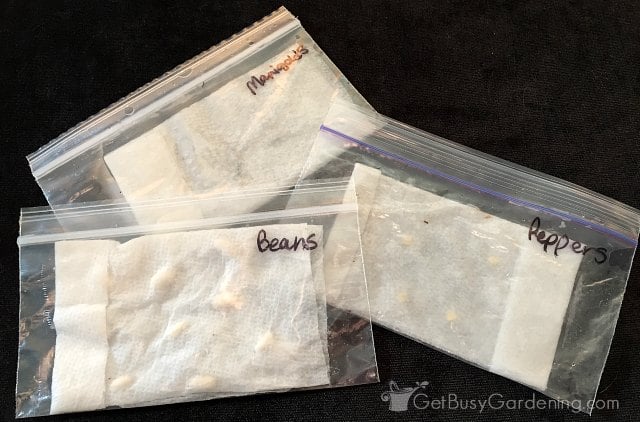
Step 4: Place somewhere warm – Put the baggie in a warm location, but keep it out of direct sunlight. Good places would be the top of the refrigerator, a warm room, or next to a heat vent.
Step 5: Check for germination – Peek at the seeds every couple of days to see if any have germinated. You can usually just look through the baggie, but sometimes you have to remove the paper towel and carefully unfold it to check, especially if the seeds are small.
Most will germinate within 7-10 days, but let them sit in the baggie for at least 2 weeks before you give up on them.
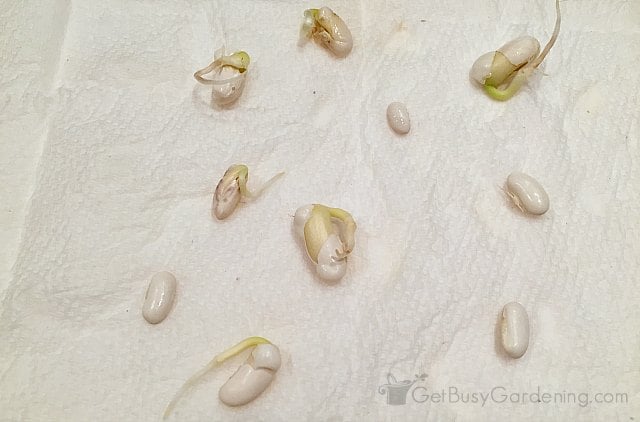
Tips For The Best Success
This seed viability test is usually very quick and easy, but sometimes it’s hard to know if it’s working, or when you should give up. Here are a few pointers:
- Some seeds take longer to germinate than others, so you may need to be extra patient.
- If the seeds still look ok after 4 weeks, then you can give them more time. However, if any of them smell bad, get moldy, or start rotting, then remove them right away and throw them out.
- The paper towel should never dry out, or it will impact the results of your germination test. To keep it moist, pour a little water into the baggie or spritz the paper towel.
- If you want to keep the seeds that successfully germinate, then I recommend removing each one as it sprouts and planting it right away. Otherwise they could start to mold or rot if you leave them inside the baggie for too long. Just be careful not to break off any of the delicate roots.
- If you don’t want to mess with viability calculations, or risk planting the duds, you could use this paper towel method on all of your seeds. Then you know you’re only planting the ones that are good, and you won’t waste time on the bad ones.
Related Post: How To Grow Seeds
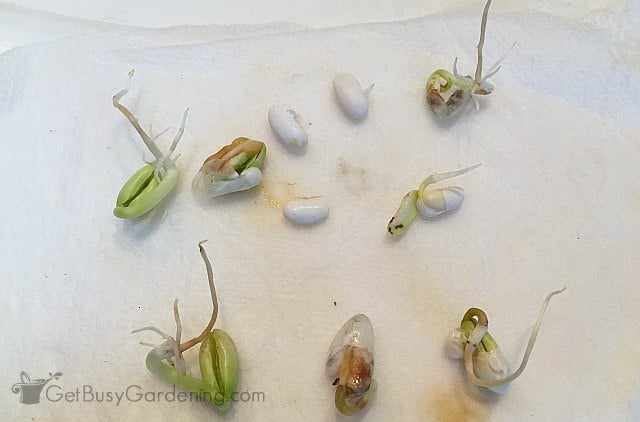
How To Determine Seed Viability
Use the viability chart below to check to see how good your seeds are. The percentages are based on using 10 seeds, so you should adjust the math if you tested a different amount.
Once you calculate the germination rate, you’ll know exactly how many seeds to plant, or which ones to toss out and replace with fresh new packets.
| # Germinated | Viability rate * | What to do |
| 10 | 100% | Plant the normal amount |
| 8 | 80% | Plant a few extras |
| 5 | 50% | Plant twice as many |
| 1 | 10% | Plant them all, or toss them |
Remember, seeds don’t last forever, so it’s best to test their viability to make sure you’re not wasting your time and money planting the ones that will never grow.
If you’re tired of trying to figure out how to grow seeds by trial and error, then my Online Seed Starting Course is for you! This comprehensive online course will teach you everything you need to know. Stop wasting time and money, and finally learn how to grow your seeds. Register for the course today!
Or, maybe you’re just looking to kick-start your growing season indoors? My Starting Seeds Indoors eBook would be perfect for you. It is a quick-start guide that will get you started indoors.
More Seed Starting Posts
- Tips For Growing Seeds Indoors For Beginners
- How To Make Your Own DIY Seed Starting Mix (with recipe!)
- How To Make Newspaper Seed Starting Pots
Leave a comment below and share your experience or added tips for how you test seed viability.
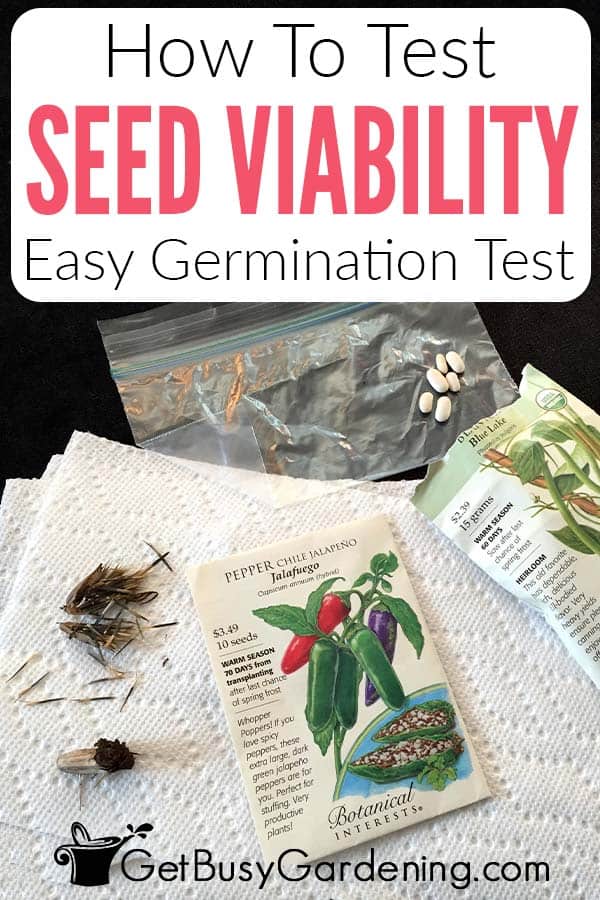
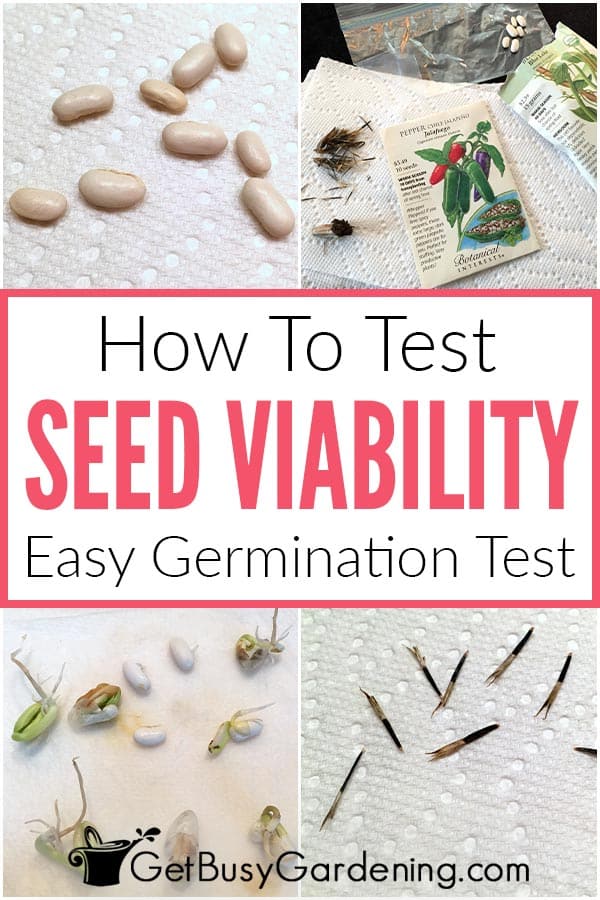
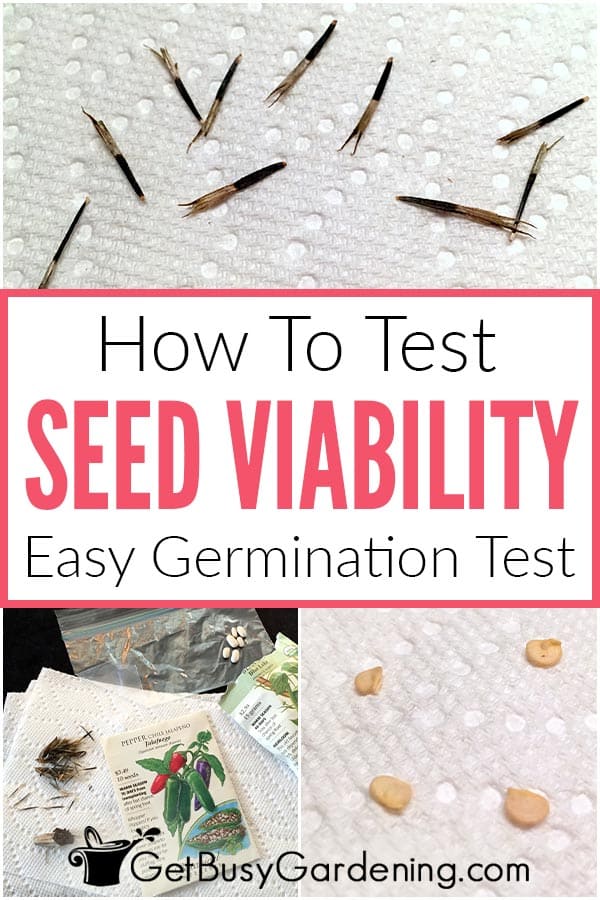
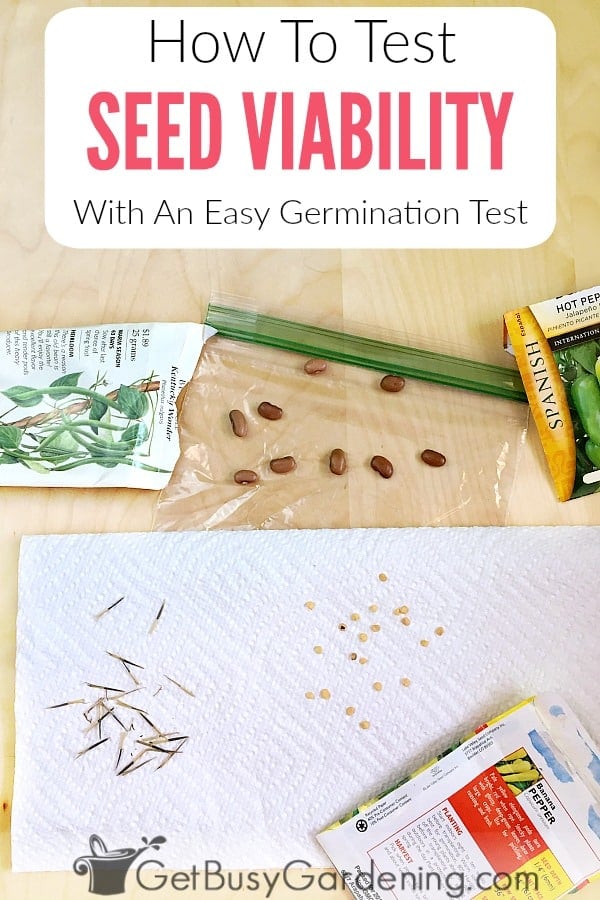

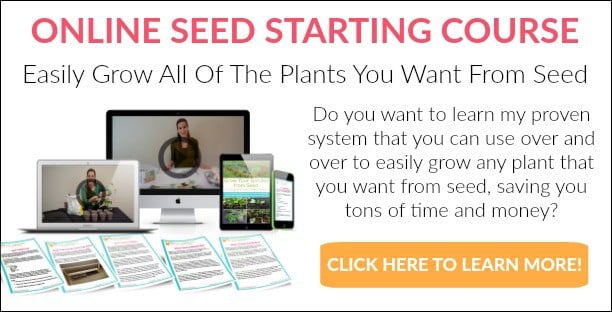

Kellie says
Do lupine seeds need cold stratification before testing them for viability?
Amy Andrychowicz says
Yes, and I would also nick their hard outer coating for best results.
Stanton R de Riel says
Nothing like assuming a perhaps 10% viability on something like 3 -year-old columbine seeds, say, and being pleasantly surprised to then find hundreds sprouting in a nursery flat. I tend to find long seed viability, but then, I keep all my saved seeds frozen until use. A cautionary note: freezing will not prevent molding in incompletely-dried seeds! Seeds that lose a large proportion of water on drying (e.g. nasturtium) are particularly prone to this.
Amy Andrychowicz says
Yes, I bet freezing seeds does help to preserve their viability, and it definitely adds the element of cold stratification for seeds that need it. But does it work for seeds that aren’t cold hardy (I would think nasturtium seeds would be ruined after freezing?).
Stanton R de Riel says
Time frozen does not count for cold-stratification requirement. For cold-strat., seeds must be moist and typically refrigerator-chilled. That enables the degradation of the germination-inhibitor material(s) in the seed.
I’ve never done comparative testing on fully dehydrated seeds, stored at RT vs. frozen, for length of viability. Fleshy, hydrated seeds that are frozen are killed by the *physical* formation of ice crystals (which puncture cell membranes), not by temperature per se — and ice crystal formation would be minimized in properly dried seeds both by the low water content (less ice to form!) and by the high soluble solids content (makes for a much lower freezing point for any water present).
Frost-tolerant (i.e. temperate-zone) trees typically protect their cambium cells in winter by loading them up with soluble small molecule materials, such as amino acids (proline), sugars, or sugar alcohols
Amy Andrychowicz says
Very interesting, thanks for all the details about seed viability and freezing them. It’s fascinating. Nature at work. 🙂
Bowen Hu says
none of the seed has viable I even bought a warmth mat but it was a waste but as you say, Amy, “it never hurts to try” so I’ll try again, Sigh.
Amy Andrychowicz says
Oh bummer, sorry to hear that none of your seeds were viable. Must have either been really old seeds, or immature ones. Good luck next time!
FRANK REXFORD says
how long do newly collected marigold seeds have to incubate before they can be planted?
Amy Andrychowicz says
I don’t think they need any time, you should be able to plant them right away.
Mike Vinh says
This is very helpful, Amy. Great article. I will start doing this for my saved seeds
Amy Andrychowicz says
Awesome, hope they’re all viable for you! 🙂
Aaron Charlton says
This is really cool. I have some seeds that I need to do this with. I was just planning on tossing them, but testing them is a much better idea. Thanks for the cool article.
Amy Andrychowicz says
You’re welcome. It never hurts to try! Have fun.
Erlene says
I needed this. I just found some seeds with an exp. date of 2014 and will be trying this. Thanks!
Amy Andrychowicz says
Great! You’re welcome.
Lin says
Thank you for this timely post. I have some older seeds and were just wondering if they were worth planting. Now I know how to check to see if they are!!
Amy Andrychowicz says
Awesome, you’re welcome!
Heather says
Interesting.. I have so many to seeds to test Amy. Thanks!
Amy Andrychowicz says
You’re welcome!